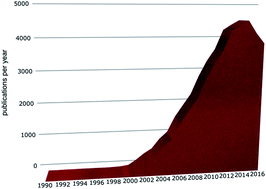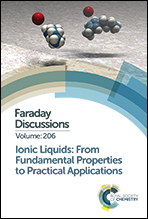Fundamental properties and practical applications of ionic liquids: concluding remarks
Abstract
The Faraday Discussion on Ionic Liquids: From Fundamental Properties to Practical Applications took place in Cambridge in September 2017. Fundamental understanding of behaviour of liquids in the bulk and at surfaces was the primary emphasis of most of the talks, although applications were the motivation for the selection of many of the research projects. However, the conference almost entirely omitted discussion of the potential role of ionic liquids in green chemistry. Although initial claims of ionic liquids (ILs) being green were overstated, the search for green ionic liquids is still very much a worthwhile endeavour. Some confusion in the field has been caused by an overemphasis on the environmental impacts of ILs themselves, despite the fact that the manufacture of ILs causes greater impacts. Additional confusion has arisen from the mistaken use of the ready biodegradability test as an indicator for ultimate degradation. Because some ILs contain cores that are highly resistant to degradation, the ready biodegradability test can give a false positive result. The author offers suggestions as to how to tackle the problem of searching for greener ILs, including a greater focus on the impacts of the synthetic pathways of relevant ions. The final decision of whether an IL is green can only come from an application-specific life cycle assessment of a product or process using the IL compared to the same product/process using competing liquids.

- This article is part of the themed collection: Ionic liquids: from fundamental properties to practical applications


 Please wait while we load your content...
Please wait while we load your content...